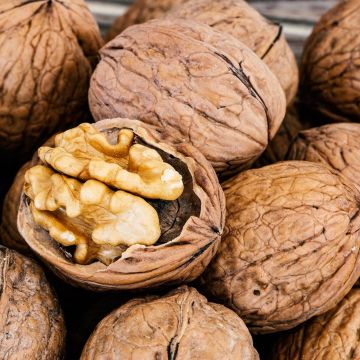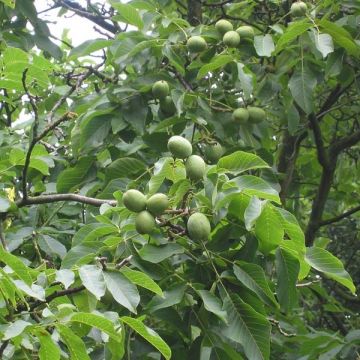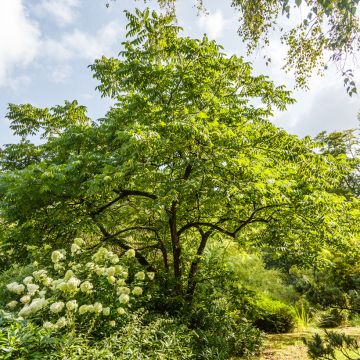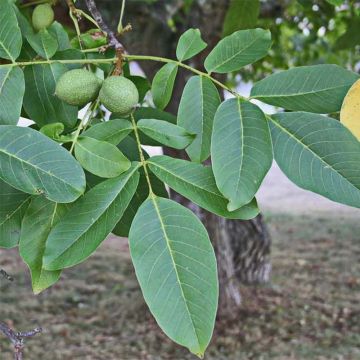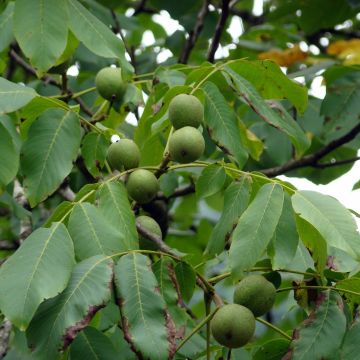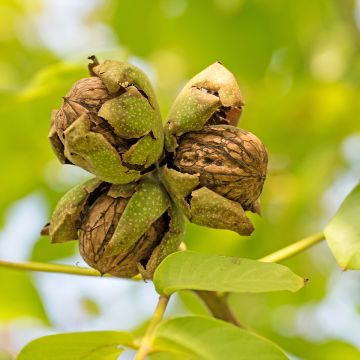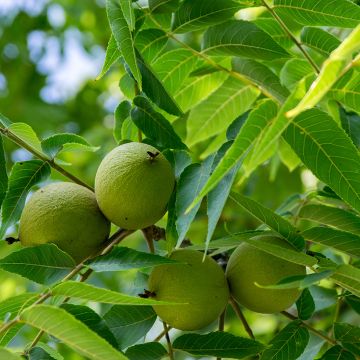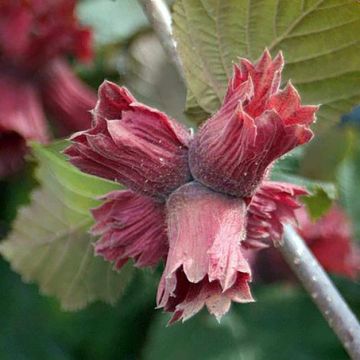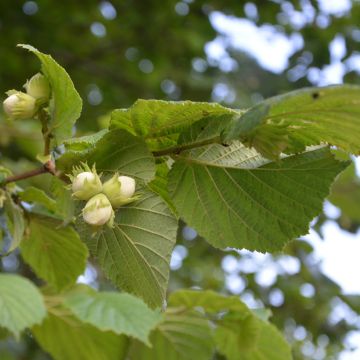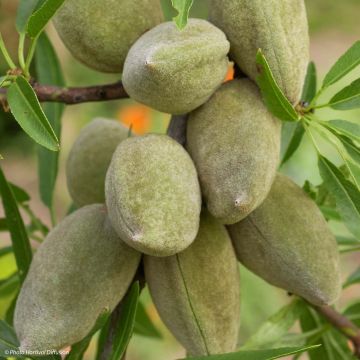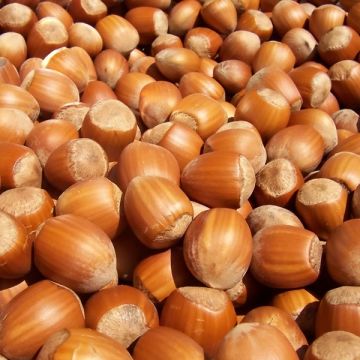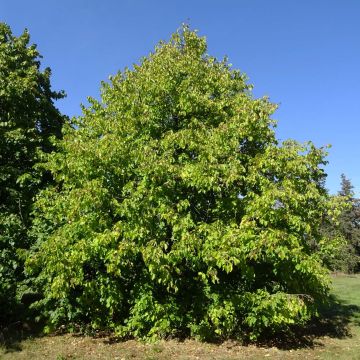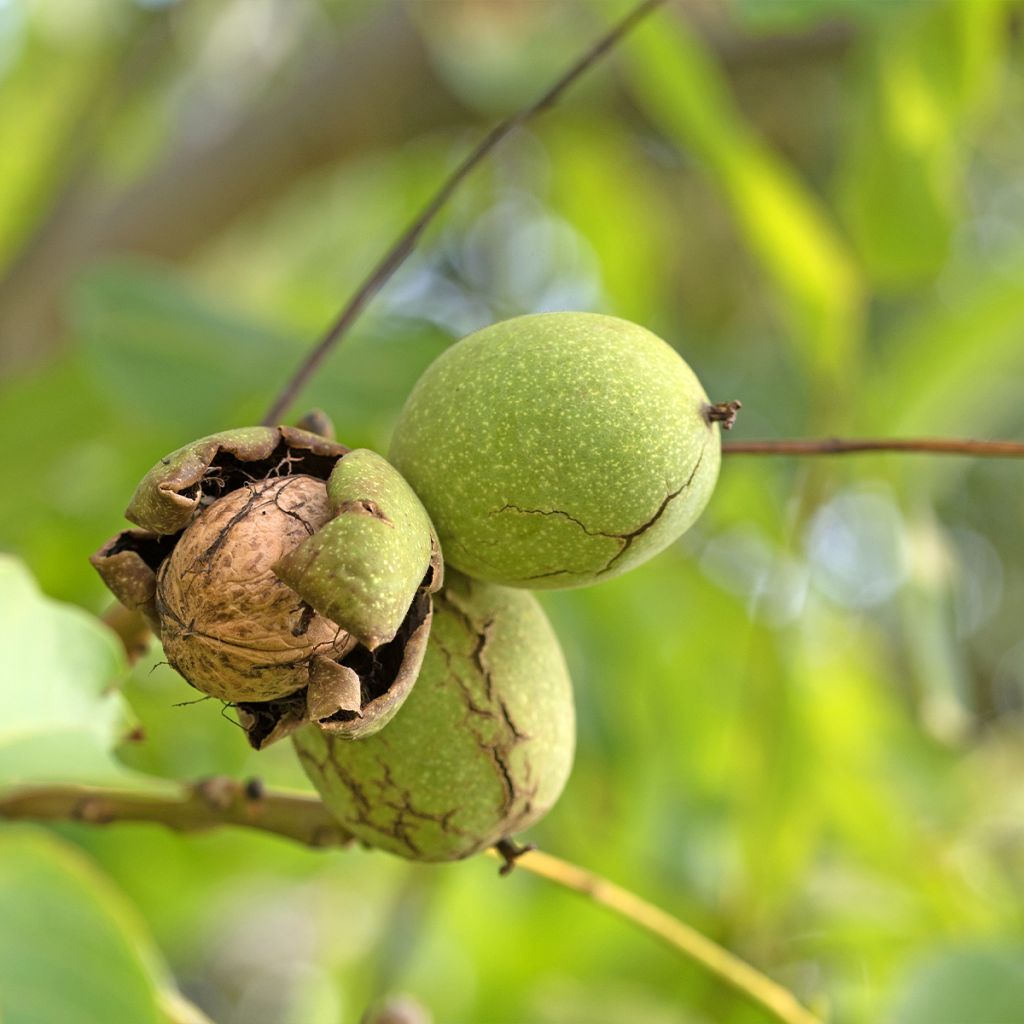

Common Walnut Weinsberg 1 - Juglans regia


Common Walnut Weinsberg 1 - Juglans regia
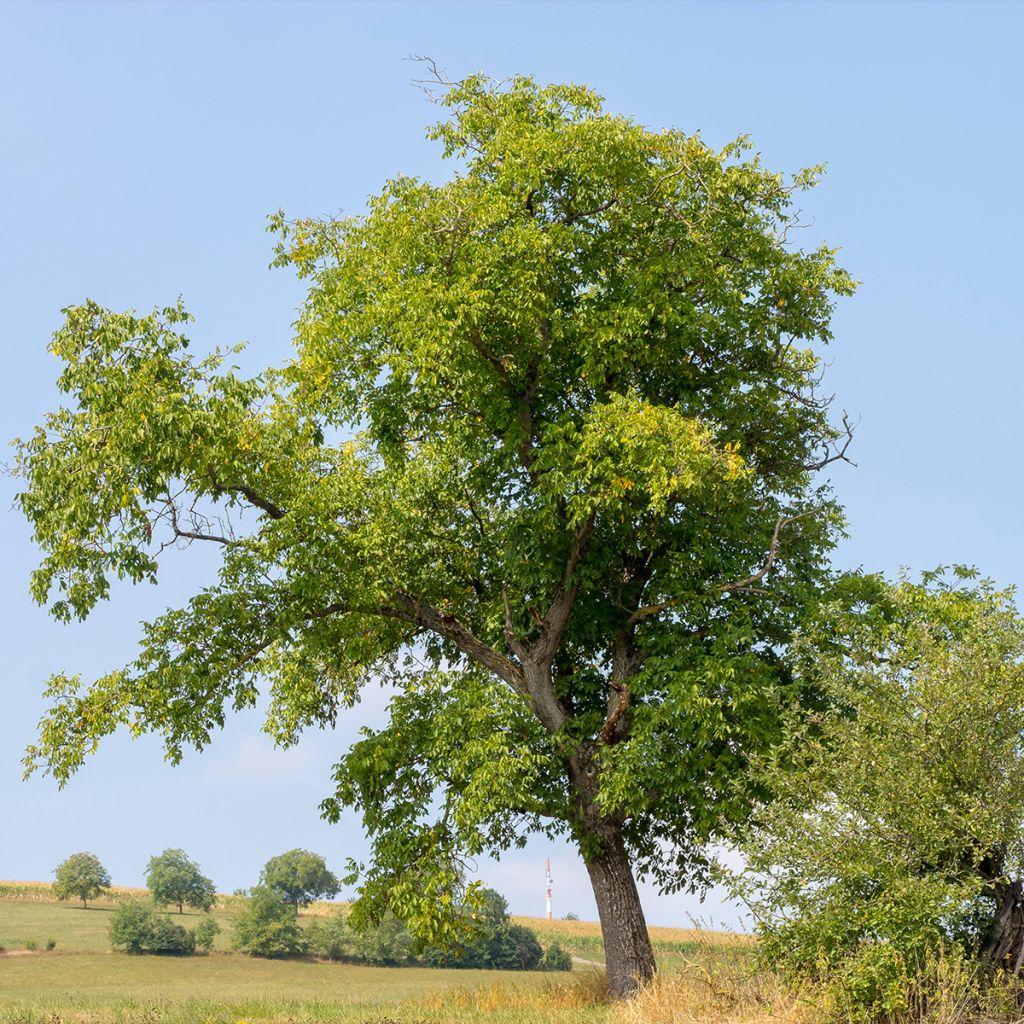

Common Walnut Weinsberg 1 - Juglans regia
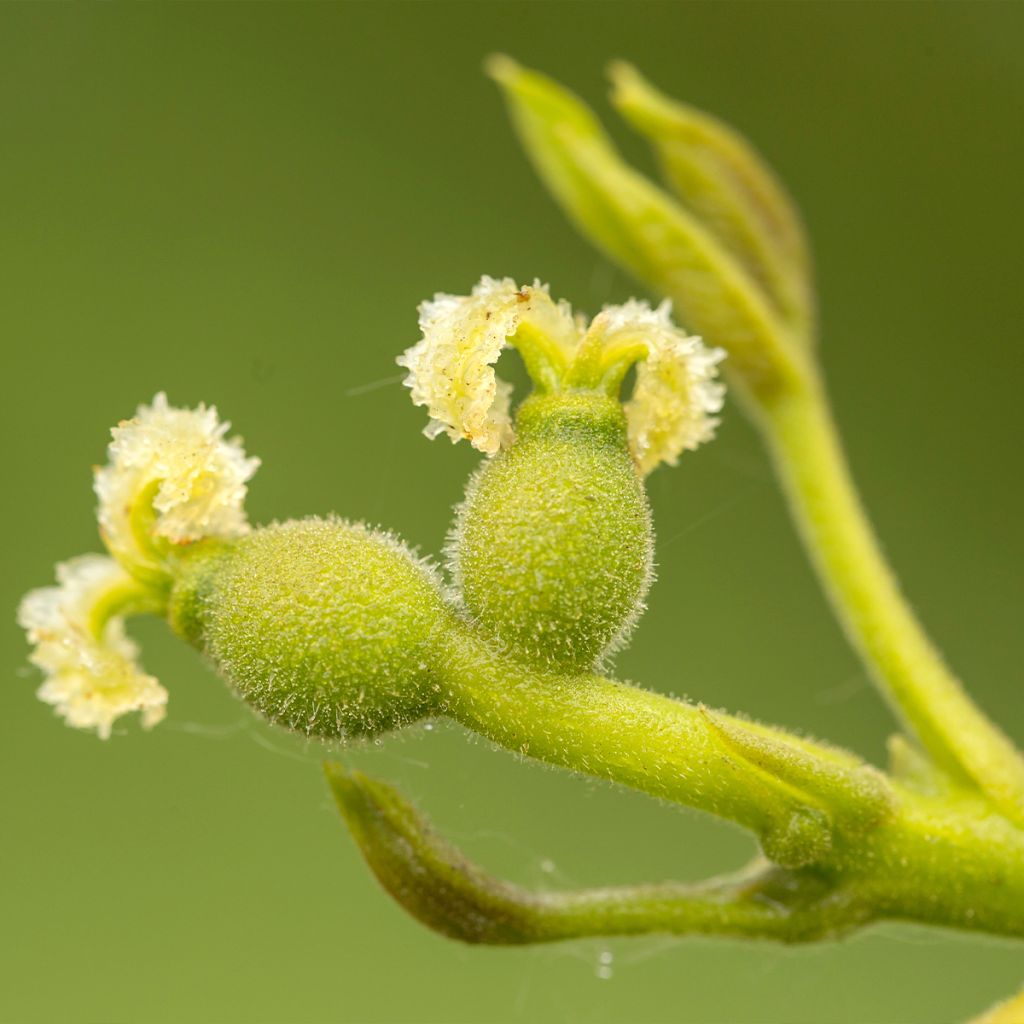

Common Walnut Weinsberg 1 - Juglans regia
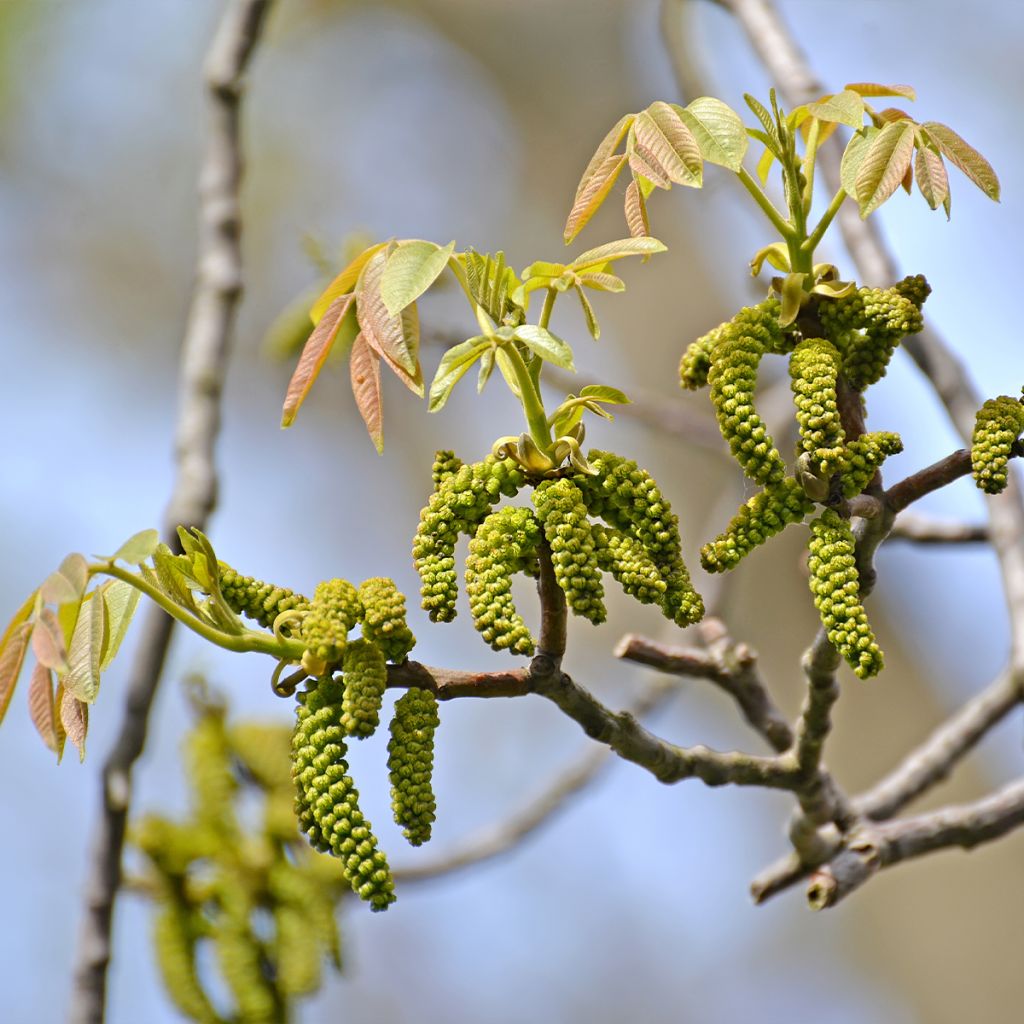

Common Walnut Weinsberg 1 - Juglans regia
Common Walnut Weinsberg 1 - Juglans regia
Juglans regia Weinsberg 1
Common Walnut, Persian Walnut, English Walnut
Careful delivery, the tree was very well protected despite its large size. It stands at over 2 meters once planted and looks healthy. We'll see in the spring how well it takes.
Florian, 18/10/2024
Special offer!
Receive a €20 voucher for any order over €90 (excluding delivery costs, credit notes, and plastic-free options)!
1- Add your favorite plants to your cart.
2- Once you have reached €90, confirm your order (you can even choose the delivery date!).
3- As soon as your order is shipped, you will receive an email containing your voucher code, valid for 3 months (90 days).
Your voucher is unique and can only be used once, for any order with a minimum value of €20, excluding delivery costs.
Can be combined with other current offers, non-divisible and non-refundable.
Why not try an alternative variety in stock?
View all →This plant carries a 6 months recovery warranty
More information
We guarantee the quality of our plants for a full growing cycle, and will replace at our expense any plant that fails to recover under normal climatic and planting conditions.

Description
Juglans regia Weinsberg 1 is a hardy, vigorous, self-fertile variety originating from Germany, highly productive with a mid-late flowering. It produces very large, oval-shaped, quite elongated nuts with a particularly thin shell. The thin-skinned kernels have an excellent, aromatic taste with a fine and sweet texture. The fruits can be eaten raw, roasted, dried or used to make oil. Dried nuts can be stored for 1 to 2 years. This Walnut prefers a sunny exposure, in deep and rich soil, even limestone. It is a majestic, fruit-bearing and ornamental tree best suited for large spaces. It is a partially self-fertile variety, fruit production will be improved with another walnut variety nearby. It is best planted in autumn or spring. Harvesting takes place from mid-September to early October.
Juglans regia, more commonly known as the Common Walnut, Royal Walnut or Calottier, is a tree belonging to the Juglandaceae family. It is native to a vast region stretching from southeastern Europe to China. The Weinsberg 1 variety is a selection that comes from the Institute for Teaching and Research for Fruits and Viticulture (LVWO) in Weinsberg, Germany.
Juglans regia Weinsberg 1 forms a large tree with a stout canopy that can reach 8 to 10 metres (26 to 33 feet) high and 6 to 8 metres (20 to 26 feet) in diameter. Its spreading habit is well suited for tall forms (on a standard). Its deciduous foliage consists of large, 20 to 30 cm (8 to 12in) long, alternate leaves with 5 to 9 lanceolate leaflets that turn yellow in autumn. The leaves of the walnut tree emit an aromatic scent when crushed, which can repel midges and mosquitoes. The mid-late flowering occurs in May-June, which generally protects it from frost. The male flowers appear as yellow-green catkins, measuring 5 to 10 cm (2 to 4in) long, and the female flowers are rather inconspicuous. It is a hardy tree that can tolerate temperatures around -25°C, but its growth is sensitive to sudden cold winters. This variety is self-fertile, but fruit production can be improved by the presence of another walnut tree nearby for cross-pollination to increase the number of fruits.
Juglans regia Weinsberg 1 is a high-yielding variety, with quick fruiting (3 to 5 years) and abundant and regular harvests. From mid-September to early October, the brou (green fleshy husk of the nut) splits on the tree and drops the nuts to the ground. This variety produces large, oval-shaped, quite elongated nuts, measuring 4 to 5 cm (2in) long and 3 cm (1in) in diameter, with a particularly thin shell. The thin-skinned kernels are of excellent taste quality with a fine and sweet texture and an aromatic flavour. The nut can be eaten fresh right after harvesting. When dried, it can be used in many recipes: desserts, pastries, salads, cheeses, etc. Roasting or grilling the nut brings out its sweet flavour and intense aromas while minimizing the bitterness of the fruit. It is also appreciated in the form of walnut oil. Green nuts can also be harvested in June for making walnut wine.
Walnuts are nutritious, rich in magnesium, calcium, B and E vitamins, iron, minerals, and trace elements. They are low in calories and rich in fibre, antioxidants, Omega-3, and fatty acids, contributing to a balanced diet and with numerous health benefits. Nuts can be stored for 1 to 2 years by drying them on racks in a well-ventilated and dry space, at a temperature of 7 to 10°C.
In the category of nuts, the Common Walnut Weinsberg 1 forms a large, hardy, and vigorous tree, relatively resistant to diseases. Easy to grow, it likes moist, deep, and rich soils, but it dislikes stagnant humidity. No planting is possible under its canopy, due to the production of juglone, an aromatic compound toxic to most plants.
Report an error about the product description
Common Walnut Weinsberg 1 - Juglans regia in pictures
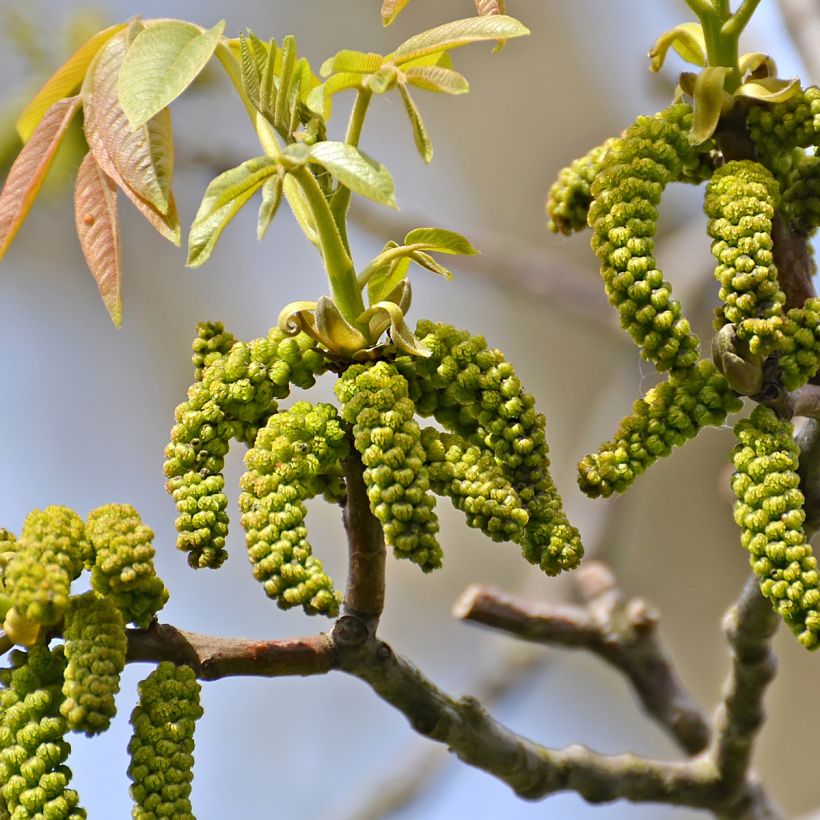

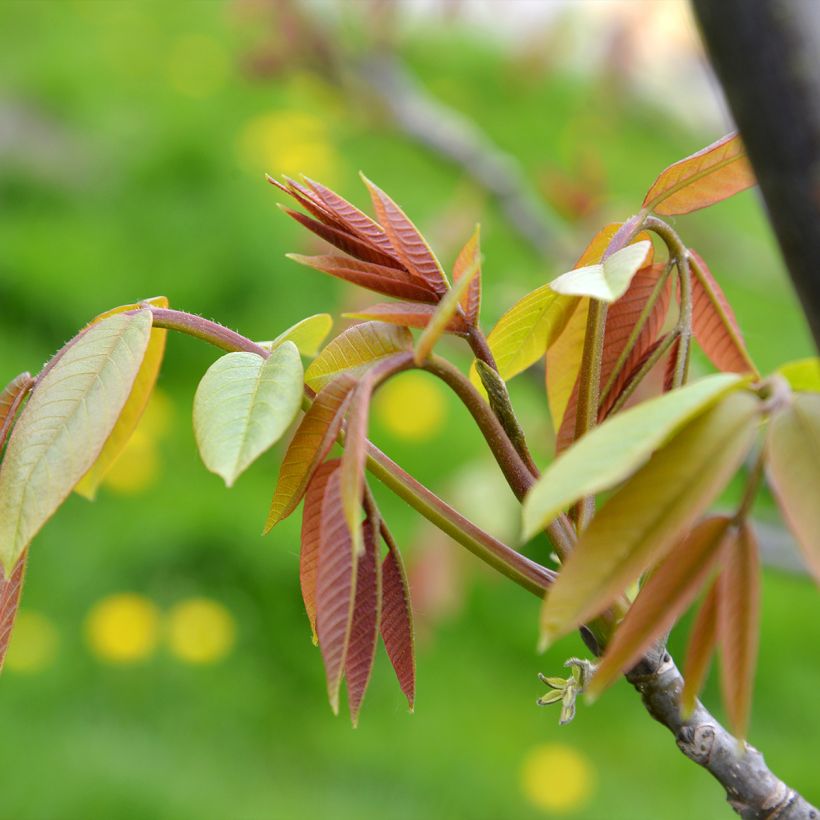

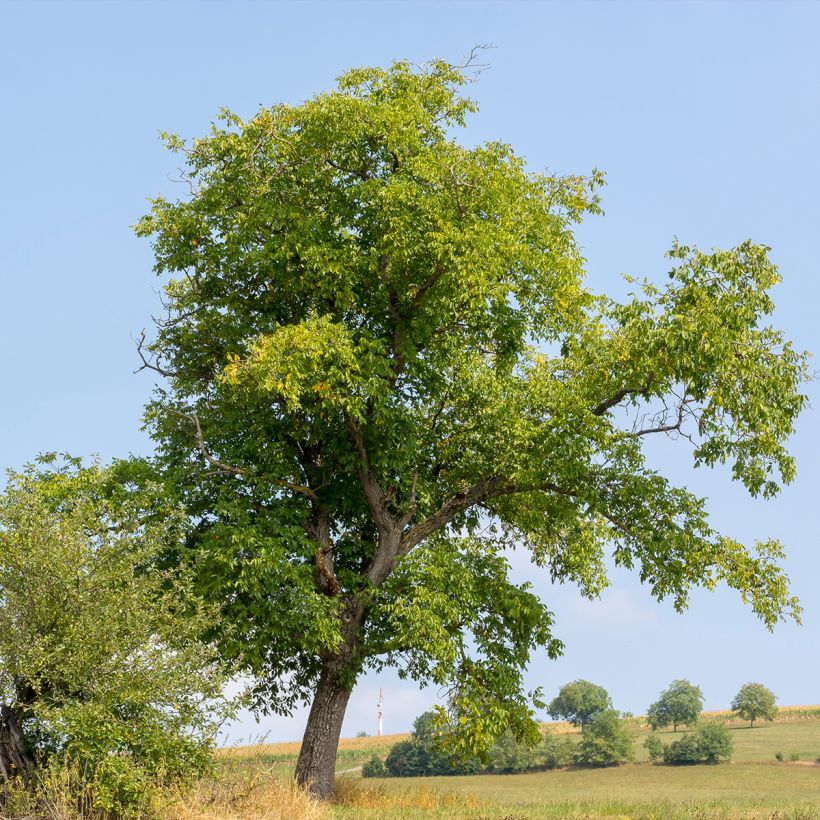

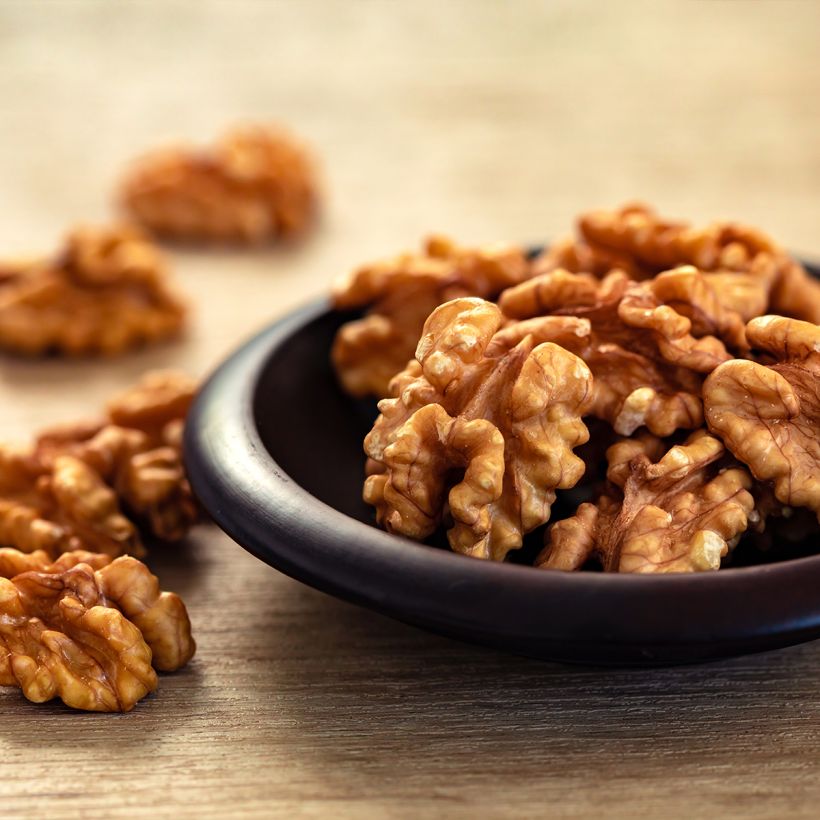

Plant habit
Fruit
Flowering
Foliage
Botanical data
Juglans
regia
Weinsberg 1
Juglandaceae
Common Walnut, Persian Walnut, English Walnut
Cultivar or hybrid
Other Walnut trees
View all →Planting and care
Plant the Common Walnut Weinsberg 1 alone, in a well-situated, not too windy, deep and rather loose soil so that it can spread its roots even if it tolerates clay.
The walnut dislikes both stagnant moisture and prolonged droughts. Plant it in deep, well-drained, even limestone soil that won't dry out too much. Despite its excellent hardiness (-25°C (-13°F)), a very cold winter limits its fruiting and can weaken the tree.
Plant in autumn, October-November, or March-April.
This plant is easy to grow, but you should know that nothing grows under its foliage due to the production of juglone, an aromatic compound toxic to most plants. Its shade is dense. It is said that you should not fall asleep at the foot of a walnut tree, for fear of catching a cold!
Allow a distance of 8-10 m (26-33ft) between each walnut tree. Dig a planting hole at least 3 times the width of the root ball. Soak the pot in water to moisten it well. Add some sand and gravel to ensure good drainage around the roots, as well as compost to lighten the soil. In too acidic soil (pH below 6.5), add dolomite or ash. Plant a stake at a distance from the root ball. Place the plant in the planting hole, avoiding burying the collar. Replace the soil and lightly firm it. Tie the walnut trunk to its stake without tightening too much. Water and mulch.
Planting period
Intended location
Care
-
, onOrder confirmed
Reply from on Promesse de fleurs
Similar products
Haven't found what you were looking for?
Hardiness is the lowest winter temperature a plant can endure without suffering serious damage or even dying. However, hardiness is affected by location (a sheltered area, such as a patio), protection (winter cover) and soil type (hardiness is improved by well-drained soil).

Photo Sharing Terms & Conditions
In order to encourage gardeners to interact and share their experiences, Promesse de fleurs offers various media enabling content to be uploaded onto its Site - in particular via the ‘Photo sharing’ module.
The User agrees to refrain from:
- Posting any content that is illegal, prejudicial, insulting, racist, inciteful to hatred, revisionist, contrary to public decency, that infringes on privacy or on the privacy rights of third parties, in particular the publicity rights of persons and goods, intellectual property rights, or the right to privacy.
- Submitting content on behalf of a third party;
- Impersonate the identity of a third party and/or publish any personal information about a third party;
In general, the User undertakes to refrain from any unethical behaviour.
All Content (in particular text, comments, files, images, photos, videos, creative works, etc.), which may be subject to property or intellectual property rights, image or other private rights, shall remain the property of the User, subject to the limited rights granted by the terms of the licence granted by Promesse de fleurs as stated below. Users are at liberty to publish or not to publish such Content on the Site, notably via the ‘Photo Sharing’ facility, and accept that this Content shall be made public and freely accessible, notably on the Internet.
Users further acknowledge, undertake to have ,and guarantee that they hold all necessary rights and permissions to publish such material on the Site, in particular with regard to the legislation in force pertaining to any privacy, property, intellectual property, image, or contractual rights, or rights of any other nature. By publishing such Content on the Site, Users acknowledge accepting full liability as publishers of the Content within the meaning of the law, and grant Promesse de fleurs, free of charge, an inclusive, worldwide licence for the said Content for the entire duration of its publication, including all reproduction, representation, up/downloading, displaying, performing, transmission, and storage rights.
Users also grant permission for their name to be linked to the Content and accept that this link may not always be made available.
By engaging in posting material, Users consent to their Content becoming automatically accessible on the Internet, in particular on other sites and/or blogs and/or web pages of the Promesse de fleurs site, including in particular social pages and the Promesse de fleurs catalogue.
Users may secure the removal of entrusted content free of charge by issuing a simple request via our contact form.
The flowering period indicated on our website applies to countries and regions located in USDA zone 8 (France, the United Kingdom, Ireland, the Netherlands, etc.)
It will vary according to where you live:
- In zones 9 to 10 (Italy, Spain, Greece, etc.), flowering will occur about 2 to 4 weeks earlier.
- In zones 6 to 7 (Germany, Poland, Slovenia, and lower mountainous regions), flowering will be delayed by 2 to 3 weeks.
- In zone 5 (Central Europe, Scandinavia), blooming will be delayed by 3 to 5 weeks.
In temperate climates, pruning of spring-flowering shrubs (forsythia, spireas, etc.) should be done just after flowering.
Pruning of summer-flowering shrubs (Indian Lilac, Perovskia, etc.) can be done in winter or spring.
In cold regions as well as with frost-sensitive plants, avoid pruning too early when severe frosts may still occur.
The planting period indicated on our website applies to countries and regions located in USDA zone 8 (France, United Kingdom, Ireland, Netherlands).
It will vary according to where you live:
- In Mediterranean zones (Marseille, Madrid, Milan, etc.), autumn and winter are the best planting periods.
- In continental zones (Strasbourg, Munich, Vienna, etc.), delay planting by 2 to 3 weeks in spring and bring it forward by 2 to 4 weeks in autumn.
- In mountainous regions (the Alps, Pyrenees, Carpathians, etc.), it is best to plant in late spring (May-June) or late summer (August-September).
The harvesting period indicated on our website applies to countries and regions in USDA zone 8 (France, England, Ireland, the Netherlands).
In colder areas (Scandinavia, Poland, Austria...) fruit and vegetable harvests are likely to be delayed by 3-4 weeks.
In warmer areas (Italy, Spain, Greece, etc.), harvesting will probably take place earlier, depending on weather conditions.
The sowing periods indicated on our website apply to countries and regions within USDA Zone 8 (France, UK, Ireland, Netherlands).
In colder areas (Scandinavia, Poland, Austria...), delay any outdoor sowing by 3-4 weeks, or sow under glass.
In warmer climes (Italy, Spain, Greece, etc.), bring outdoor sowing forward by a few weeks.






























